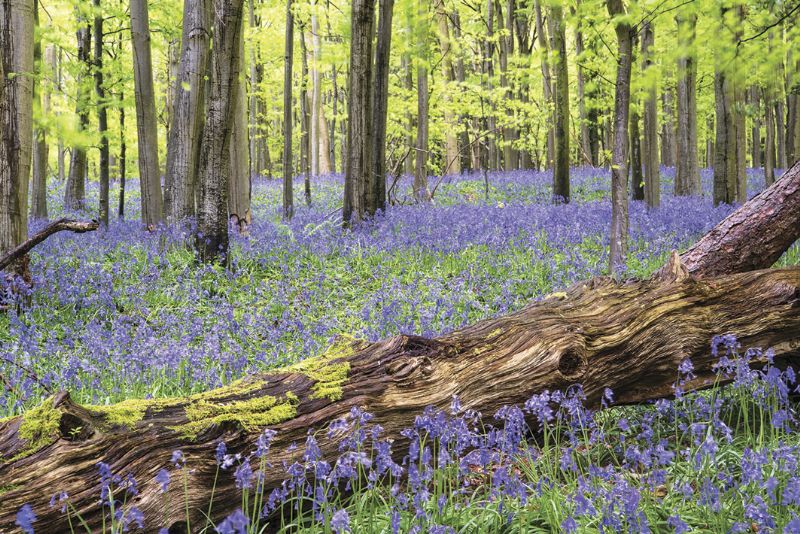- Home
- News, Articles & Reviews
We are hiring! Please click here to join our growing magazine delivery team in Gloucestershire!
Areas
Homes & Gardens
Archive

The nodding heads of bluebells
All Areas > Homes & Gardens > In the Garden
Author: Julia Smith, Posted: Friday, 20th March 2020, 09:00
At last spring is really here and everything is bursting with life. British gardens typically look at their best in spring and early summer when everything seems to be gearing itself up for a spectacular display of colour.
As daffodils finish flowering, the faded flowerheads can be removed. The small daffodils which are being grown to naturalise can be left to form seedheads. Don’t cut off the foliage – it needs at least six weeks’ dying to replenish the bulb underneath so it can flower the following year.
Also, don’t tie up daffodils in strange bundles with elastic bands, as this can damage the leaves as well as being very odd-looking!
English bluebells are under threat from the Spanish variety
A wood full of the beautiful nodding heads and scent of bluebells is a quintessentially English experience and they will be coming out this month. Unfortunately, they are under threat from the Spanish bluebell, which is grown in gardens as it was considered more decorative than its English cousin.
How to tell them apart? Well the English bluebell (Hyacinthoides non-scripta) has scented flowers borne on one side of the stem, the anthers are cream-coloured and unequal, and the flower spike is nodding.
The Spanish bluebell (H.hispanica) has unscented flowers borne on all sides of the stem. It has blue equal anthers and an upright flower spike.
So, take care with what you plant (under no circumstances harvest any from the wild!), sourcing them from reputable retailers, and you too could enjoy the fragrance of your own little bluebell patch.
Keep a lookout for the red lily beetles on newly emerging lily shoots. Pick them off and squash them, and if you are not averse to the use of chemicals, use a systemic spray like Provado Ultimate Bug Killer to keep them safe for up to six weeks.
Feed your fruit bushes
With having such a wet winter, it might be a good idea to feed your fruit bushes – the rain washes all the goodness from the soil. A balanced general fertiliser such as Gromore or blood, fish and bone can be applied at about 70g per square metre to give them a boost.
Now is the time to make successional sowings of beetroot, chard and radishes outdoors ready for gathering in July and August. Follow the instructions on the packet, sowing in an area where the soil has been carefully raked to a fine tilth and don’t forget to label the rows!Copyright © 2026 The Local Answer Limited.
Unauthorized use and/or duplication of this material without express and written permission from this site's author and/or owner is strictly prohibited. Excerpts and links may be used, provided that full and clear credit is given to The Local Answer Limited and thelocalanswer.co.uk with appropriate and specific direction to the original content.More articles you may be interested in...


© 2026 The Local Answer Limited - Registered in England and Wales - Company No. 06929408
Unit H, Churchill Industrial Estate, Churchill Road, Leckhampton, Cheltenham, GL53 7EG - VAT Registration No. 975613000You are leaving the TLA website...
You are now leaving the TLA website and are going to a website that is not operated by us. The Local Answer are not responsible for the content or availability of linked sites, and cannot accept liability if the linked site has been compromised and contains unsuitable images or other content. If you wish to proceed, please click the "Continue" button below:




